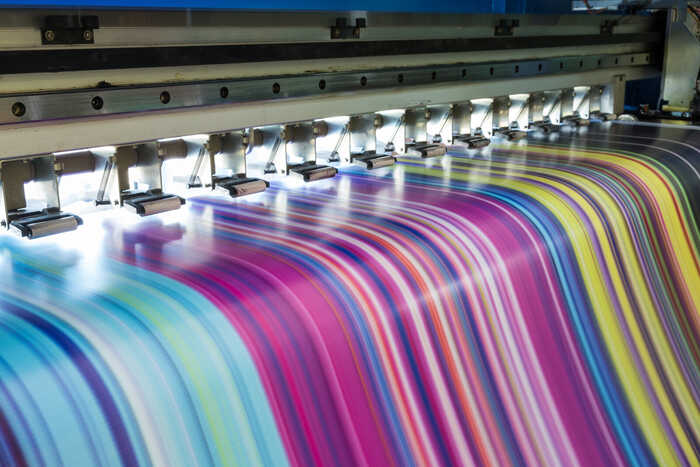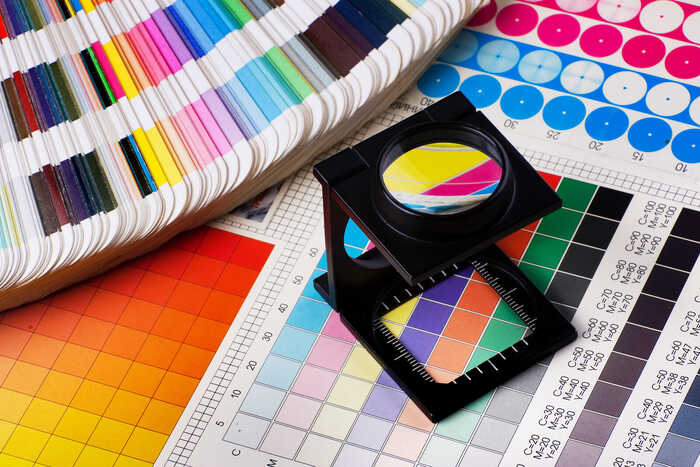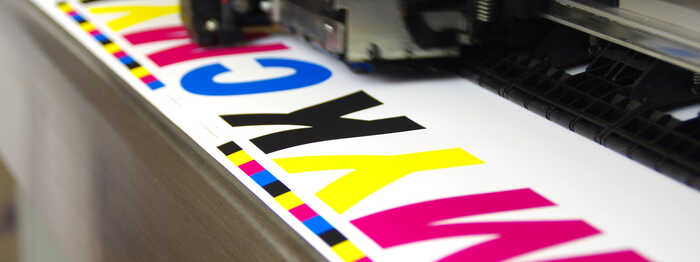In the world of modern printing and document management, capturing vibrant and lifelike colours is at the heart of creating a visually stunning image. Perhaps one of the most widely used techniques for achieving this is 4 colour printing, also known as CMYK printing.
By combining four primary ink colours—cyan, magenta, yellow, and black—this process allows for the creation of captivating, full-colour images. Let’s delve a little deeper into the concept of 4 colour printing, explore its advantages and disadvantages, and how it compares to other printing processes.
Understanding 4 colour printing: unleashing the spectrum
4 colour printing is a subtractive colour model that uses a combination of four ink colours to produce a wide range of hues. Each colour represents a primary pigment:
Cyan: This ink absorbs red light, making it an ideal choice for creating shades of blue and green.
Magenta: Absorbing green light, magenta contributes to the creation of vibrant purples, pinks, and reds.
Yellow: By absorbing blue light, yellow is responsible for producing various shades of orange and green.
Black: Often referred to as the "key" colour, black adds depth and contrast to the final output, enhancing the overall visual impact.

Advantages of 4 colour printing: embracing a kaleidoscope of possibilities
Using 4 colour printing offers several advantages, making it a popular choice for a wide array of managed print projects. Let's explore some of its key benefits:
Colour reproduction: CMYK printing offers exceptional colour accuracy, allowing for the faithful reproduction of vibrant images and intricate details.
Versatility: This printing method is suitable for a variety of materials, including brochures, flyers, posters, and business cards. It can be employed in both large-scale commercial printing and smaller, on-demand print runs.
Cost-effective: Compared to other techniques like spot colour printing, 4 colour printing is often more cost-effective, especially for projects that require a broad spectrum of colours.
Photographic realism: By using a combination of primary colours, 4 colour printing can replicate photographic images with impressive fidelity, bringing them to life on paper.
Disadvantages of 4 colour printing: navigating the challenges
While 4 colour printing presents numerous advantages, it is essential to consider its limitations:
Limited colour range: Despite its versatility, CMYK printing cannot reproduce certain shades precisely, such as metallic or fluorescent colours. In such cases, spot colour printing may be a more suitable option.
Colour consistency: Achieving consistent colour reproduction across different printing devices and substrates can be challenging due to variations in ink, paper, and environmental factors. Close collaboration with an experienced print and document management solutions provider is crucial to ensure the desired results.

Spot colour printing vs. 4 colour printing: comparing the techniques
Spot colour printing, unlike 4 colour printing, employs premixed ink colours that are not based on the CMYK model. This technique offers precise colour matching, making it ideal for projects that require specific corporate branding or unique colour requirements. However, compared to CMYK printing, spot colour printing may incur higher costs, especially when working with multiple colours.
How can we help?
When it comes to meeting your print and document management needs, trust the expertise of Lanier South West. With our comprehensive solutions and industry experience, we can provide you with high-quality printing services that encompass the power of 4 colour printing. Whether you require vibrant brochures, eye-catching posters, or professional business cards, our team will ensure that your print materials stand out from the crowd. Why not contact Lanier South West today to see how we can help?
Posted on June 14th 2023


